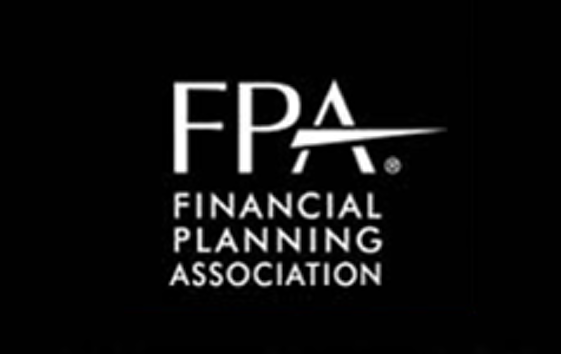 Arsenal Attorneys: A National Firm - Offices in Virginia and California
Arsenal Attorneys: A National Firm - Offices in Virginia and California
Arsenal Attorneys: A National Firm - Offices in Virginia and California
Arsenal Attorneys: A National Firm - Offices in Virginia and California
CONTACT US TODAY
800.819.0608
Displaying items by tag: gun trust
Faster NFA Tax Stamps Expected as ATF Expands eForm System
Arsenal Attorney’s clients could soon expect to receive faster approval of NFA applications. According to BATFE, sometime after December 15 but before Christmas, the eForm system will expand to accept ATF Forms 1, 2, 3, 4, 5, 6, and 9. In this blog we have presented background to these developments as well as next steps our clients could take to benefit from these developments.
For background, firearms regulated under the National Firearms Act (NFA), include silencers/suppressors, short barrel rifles, short barrel shotguns, and full auto. NFA regulations are administered by BATFE, who issue tax stamps to approved applications to register NFA firearms following payment of the applicable tax.
Previously most applications to register NFA firearms have been submitted in hard copy followed by a wait of 6-9 months. During the Obama presidency, it was common for NFA applicants to wait as long as 18 months for a tax stamp. During this same period, ATF launched eForms, but it was limited to a few categories, such as ATF Form 5320.1, the ‘Application to Make and Register an NFA Firearm’ (Form 1). Typically, Arsenal Attorneys’ clients submitting Form 1’s electronically through eForms have received a tax stamp in just a few weeks. The most common Form 1 concerned building short barrel rifles (SBR). The new eForms system will accept Form 4 (ATF Form 5320.4), which is used to transfer an NFA firearm. The most common example of such an NFA transfer is the retail purchase of a silencer.
It may come as a surprise that eForms will expand to benefit NFA applicants during the Biden presidency. In fact, funding for eForms was previously budgeted due to the long-term efforts of firearms industry leaders, particularly Silencer Shop. In fact, Silencer Shop has maintained a close working relationship with ATF’s NFA Division to upgrade technology and improve efficiency. For example, in 2017 ATF adopted Silencer Shop’s proposal to bar code all the data in a Form 4. By scanning that code attached to the first page of an NFA transfer application, ATF staff avoided the need to manually input all that information. The combination of bar coding and the use of eForms for Form 1 greatly reduced the processing times for NFA tax stamps.
What if you have an NFA application pending with ATF?
Before cancelling NFA applications awaiting ATF approval, consider this guidance from the American Suppressor Association:
If you recently submitted an NFA application, keep it in the queue. We cannot stress this enough. Withdrawing your Form 4 and re-submitting electronically will take longer than allowing your Form 4 to make its way through the approval process. That’s because ATF isn’t going to dig through the tens of thousands of forms being processed to find your application. They’re going to wait until your Form 4 reaches an NFA examiners desk – the exact point at which it would normally be approved – to process your withdrawal. Instead of approving it though, they will acknowledge your withdrawal and release your serial number. You will not be able to re-submit an eForm 4 with the same serial number until ATF acknowledges your withdrawal and puts it back into your dealer’s inventory. Thus, withdrawing and re-submitting electronically will add months to your overall application process.
How can you take advantage of eForms?
NFA applicants could pursue a mixed strategy of buy now but wait and see. Once the new eForm system goes live, it is expected it will need 24-48 hours to become fully operational. Of course, Murphy’s law could apply to any launch of a government website. Recall the disastrous launch of the Obamacare website. Thus, it might be wise to wait and see when the new eForms is fully functional.
Nevertheless, this breaking news has sparked another spike in demand for NFA firearms, which could reduce inventories and increase prices. Remember, you can purchase an NFA firearm now, but delay the application until eForms is available. If eForms proves faulty and unreliable, then a traditional paper application could be a better option. That said, we encourage you to plan your next steps in cooperation with your FFL. Circumstances like the eForm launch highlight the importance of dealing with a reputable FFL who will provide good customer service and manage your NFA application through the ATF process.
Finally, we recommend use of a trust for any NFA application to avoid the danger of unlawful possession by those who have access to an NFA firearm. Also, an effectively designed trust, like Arsenal Attorneys’ proprietary Arsenal Gun Trust, can be a firearms-specific estate plan for an entire gun collection. We help clients ensure their firearms are distributed safely, lawfully, and privately. If you are an existing client, or if you have a trust obtained elsewhere, contact us to update your documents before submitting a new NFA application. Remember, if you have a poorly designed trust or a trust pre-dating the 2016 changes to the NFA regulations, you can update your existing trust by means of a 'restatement'. Contact us to learn more.
Arsenal Attorneys is a nationwide law firm headquartered in Fairfax, Virginia near metropolitan Washington, DC. The firm serves clients in over 30 states in estate planning, criminal defense, civil litigation, business law, landlord-tenant disputes, real estate, firearms law, restoration of rights, carry permits, and the firm’s proprietary Arsenal Gun Trust. Matthew Bergstrom is the firm’s Managing Attorney, and he is licensed in California, Michigan, Nevada, Virginia, and the District of Columbia.
This blog is intended for informational purposes only and is not intended as legal advice.
Summary of argument in New York State Rifle and Pistol Association v. Bruen
By George L. Lyon, Jr*
WASHINGTON, DC, NOV. 3, 2021: The Supreme Court today heard arguments in the case of New York State Rifle and Pistol Association v. Bruen. This case concerns the constitutionality of New York’s Sullivan law which requires applicants for an unrestricted pistol license to show “good cause,” defined as a special need for self-protection, distinct from the average person in their particular occupations. The law was previously upheld by the United States Court of Appeals for the Second Circuit. Former U.S. Solicitor General Paul Clement argued for the opponents of the law. New York’s Solicitor General and the Acting Solicitor General of the United States argued in support of the law.
Mr. Clement opened by stating that the Supreme Court’s 2008 Heller decision confirms the right of an individual, independent of service in a state militia, to both keep and to carry arms, that New York concedes there is a right to carry outside the home and that concession dooms the New York good cause requirement because it transforms a right into a mere privilege subject to the whims of governmental authorities.
The Justices’ questioning of counsel provided a fair degree of insight into how they are viewing the case. It was apparent from the questioning by Justices Breyer, Kagan, and Sotomayor that they see nothing constitutional infirm with New York’s good cause requirement. Although all the Justices seemed to agree that the court should look to text, history and tradition as at least an initial starting point in evaluating the case, there was not uniformity in terms of what historical periods should be most relevant to the court’s decision on this issue. Justice Thomas, for example, asked whether the founding period was most relevant or the period surrounding the adoption of the 14thAmendment, which the Court construes as having applied the Second Amendment to the several states. Mr. Clement’s response was that to the extent the history was in conflict, the period of the adoption of the 14thAmendment was most appropriate, but that here there is no such conflict. Mr. Clement would limit examination of history beyond those times as he said that the point is to look at the history that's relevant for understanding the original public meaning of the Second Amendment and the 14th Amendment.
Justice Breyer questioned whether the historical discussion in Heller was accurate but also suggested that the record in the case lacked sufficient data as to how New York is applying its good cause standard, in essence suggesting the court should remand the case for factual development. Mr. Clement responded that as to his two clients, there is no question how the good cause standard was applied because they were both denied unrestricted licenses for lack of good cause.
Justice Kagan observed that while Heller presumptively validated laws prohibiting felons and the mentally ill from possessing firearms, these laws were of relatively recent vintage, e.g., in the 1920s. Mr. Clement pointed out that at the founding, felonies were capital crimes, and also that regulations in the 20th century were to a large extent based on the collective rights theory that Heller rejected.
A theme of both New York and the United States as well as Justice Sotomayor was to suggest a robust history of firearms regulation in the nation. New York’s counsel also placed substantial reliance on the ancient Statute of Northampton and on 18th and 19th century surety laws to support restrictions on carrying arms outside the home. Mr. Clement pointed out that the Statute of Northampton has not been interpreted to prevent carrying arms except where one carries dangerous and unusual arms to terrorize the people. He further suggested that the surety laws New York referenced actually supported a right to carry arms in self-defense because such laws assumed the right to carry and only on complaint of an abuse of that right did they require a bond to keep the peace while still carrying.
Justice Alito who appears to have concluded that the good cause requirement is constitutionally infirm also called out New York for omitting the term “armed offensively” when citing a manual on the laws of North Carolina that appeared to call for the arrest of persons going armed. New York’s response was that firearms are inherently offensive. By the way, New York was not alone in making these types of omissions. Amici in support of New York made similar questionable omissions when quoting historical resources. Justice Alito also raised the question how scattered statutes or judicial decisions in the 19th and 20th centuries that are inconsistent with petitioners’ argument bear on the original intent of the Second Amendment.
It appears that Chief Justice Roberts shares Justice Alito’s skepticism with respect to the good cause requirement. Chief Justice Roberts suggested that Heller rather than Northampton should be the starting point.
This occurred in the context of another issue that merited substantial discussion, whether there should be a different rule for urban rather than rural areas. New York’s counsel argued that permits are more plentiful in rural areas of New York than in the more populated areas and that guns in populated areas create a greater risk of harm. Chief Justice Roberts pushed back against this line of argument. He said that Heller relied on the right of self-defense and that it is more likely that one would need a gun for self-defense in a populated area than in a rural area, pointing to high crime urban areas. “How many muggings happen in the woods?” he asked. He continued this line of inquiry and asked a hypothetical question about someone concerned about an active serial killer. New York’s counsel suggested that alone was not a sufficient reason to allow a citizen to carry outside the home for self-protection. Justice Kavanaugh picked up on that line and asked why isn’t it good enough to say you live in a violent area? New York’s counsel’s response can best be described as largely unresponsive to the question.
Justice Kavanaugh expressed concern that the discretion afforded licensing officials is inconsistent with the notion of a constitutional right. Justice Kagan stated that it seemed intuitive to her that there should be different gun regimes in New York versus Wyoming but stated that it is a hard concept to match with our notion of constitutional rights. She stated that the First Amendment would never allow such a distinction and asked for justification. Counsel’s response was that local conditions and concerns should dictate and that New York delegates the decision on license issuance to local officials.
The Justices seemed intent on examining the “sensitive places” issue which is not directly raised by the case. Chief Justice Roberts asked Mr. Clement whether universities could be off limits or places that serve alcohol. Mr. Clement responded yes to universities and that states could restrict consuming alcohol while carrying. Other Justices asked about sports stadiums, protests, subways, and special events. Justice Barrett asked about Times Square on New Year’s Eve. Mr. Clement suggested that as to particular places, the courts should look to historical analogs. He further likened sensitive places to the non-public forum doctrine in First Amendment law, basically a place where given its nature weapons would be out of place. Justice Alito suggested that a way to handle the sensitive places question would be to examine whether the state has taken alternative means to safeguard persons, for example, though use of metal detectors.
On balance it appears five votes exist to overturn the good reason requirement with Justice Barrett possibly a sixth vote.
Here is a link to the transcript of the argument on the Supreme Court’s website: https://www.supremecourt.gov/oral_arguments/argument_transcripts/2021/20-843_i4dk.pdf.
* Arsenal Attorneys is a nationwide law firm headquartered in Fairfax, Virginia in the metropolitan Washington, DC. The firm offers serves clients in over 30 states in estate planning, criminal defense, civil litigation, business law, landlord-tenant disputes, real estate, firearms law, restoration of rights, carry permits, and the firm’s proprietary Arsenal Gun Trust. Matthew Bergstrom is the firm’s Managing Attorney, and he is licensed in California, Michigan, Nevada, Virginia, and the District of Columbia. George Lyon is licensed to practice law in Virginia and the District of Columbia. He was one of the plaintiffs in Palmer v. District of Columbia which forced DC to begin issuing concealed carry licenses, and he was one of the initial plaintiffs in the US Supreme Court's landmark Second Amendment decision, Heller, which legalized handguns in Washington, DC. Mr. Lyon is licensed by the Metropolitan Police Department to teach the DC Concealed Carry License course including the renewal course and conducts the course monthly. Contact Mr. Lyon at gll[at]arsenalattorneys.com.
This blog is intended for informational purposes only and is not intended as legal advice.
Seminar: Estate Planning for Firearms
Arsenal Attorneys' Matthew Bergstrom will teach a seminar for lawyers on August 20 entitled "Firearms in Estate Administration: Legal Issues, Executor Liability, Transferring Title I and II Guns, Penalties--Understanding Gun Legal Designations, In-State and Out-of-State Transfers, Use of Gun Trusts." Mr. Bergstrom will be joined by attorneys Michael W. Zarlenga and Sam Hosey to deliver the program. This continuing legal education program is sponsored by Strafford Publications, and attendees may earn CLE credit as may be required by their state bar.
This CLE webinar will guide estate planners and administrators on managing the legal challenges of firearms in estate and trust administration. The panel will discuss federal gun laws and firearm designations, issues for beneficiaries inheriting guns, in-state and out-of-state transfers, and legal ownership. The panel will also review the use of trusts and other entities to transfer guns legally, and best practices to avoid mishaps in the administration of estates or trusts holding firearms.
Arsenal Attorneys to be Featured in Seminar on Estate Planning for Firearms
 Arsenal Attorneys and our Arsenal Gun Trust services will be featured in an upcoming online seminar on August 20 for lawyers concerning estate planning for firearms entitled, "Firearms in Estate Administration: Legal Issues, Executor Liability, Transferring Title I and II Guns, Penalties -- Understanding Gun Legal Designations, In-State and Out-of-State Transfers, Use of Gun Trusts."
Arsenal Attorneys and our Arsenal Gun Trust services will be featured in an upcoming online seminar on August 20 for lawyers concerning estate planning for firearms entitled, "Firearms in Estate Administration: Legal Issues, Executor Liability, Transferring Title I and II Guns, Penalties -- Understanding Gun Legal Designations, In-State and Out-of-State Transfers, Use of Gun Trusts."
This CLE webinar will guide estate planners and administrators on managing the legal challenges of firearms in estate and trust administration. The panel will discuss federal gun laws and firearm designations, issues for beneficiaries inheriting guns, in-state and out-of-state transfers and legal ownership, use of trusts and other entities to legally transfer guns, and best practices to avoid mishaps in the administration of estates or trusts holding firearms.
The administration of an estate holding firearms can cause increased expenses, fees, taxes, and potential liability if mishandled. Managing guns within an estate requires an in-depth knowledge of a myriad of federal and state regulations to adhere to in order to avoid excessive fines and criminal liability.
The National Firearms Act (NFA) encompasses strict prohibitions and restrictions on the transfer of certain firearms. Prohibited possession can be actual or constructive with zero tolerance for inadequate processes in the acquisition. Also, state laws will apply to transfers or sales of firearms within their jurisdictions. If there is an out-of-state transfer or sale of a gun, compliance with federal and state laws becomes more complicated.
Estate planners and executors must be mindful of the possibility that some beneficiaries may be ineligible to receive firearms and consider alternative methods to align with a client's intent, such as naming alternate recipients or by creating a gun trust. Trusts can legally hold the firearms and allows a trustee to lawfully possess the firearms and minimize administration issues regarding the transfer or sale of firearms during probate.
The panel will discuss the classification, ownership, and transfer rules applicable to firearms, and the creation and use of guns trusts and other planning methods to ensure the proper administration of an estate holding firearms.
Seminar Topics will also include:
- Firearm classification, ownership, and transfer rules
- Federal and state gun laws
- Title I vs. Title II firearms
- In-state and out-of-state transfers
- Handling the estate administration of firearms
- Key considerations for gifts and bequests
- Valuation
- Legal ownership
- Potential penalties and liability
- Gun trusts
- Liability issues
- Sale or transfer of estate-held firearms
- Best practices for estate planners and administrators
For more information, contact Arsenal Attorneys using the contact form at our website.
CONTACT OUR FIRM
CONTACT US TODAY
Arsenal Attorneys is committed to answering your questions about estate planning, firearms, business law, litigation, and criminal defense issues.
We'll gladly discuss your case with you at your convenience. Contact us today to schedule an appointment.
LOCATION
4000 Legato RoadSuite 1100
Fairfax, VA 22033
800.819.0608











